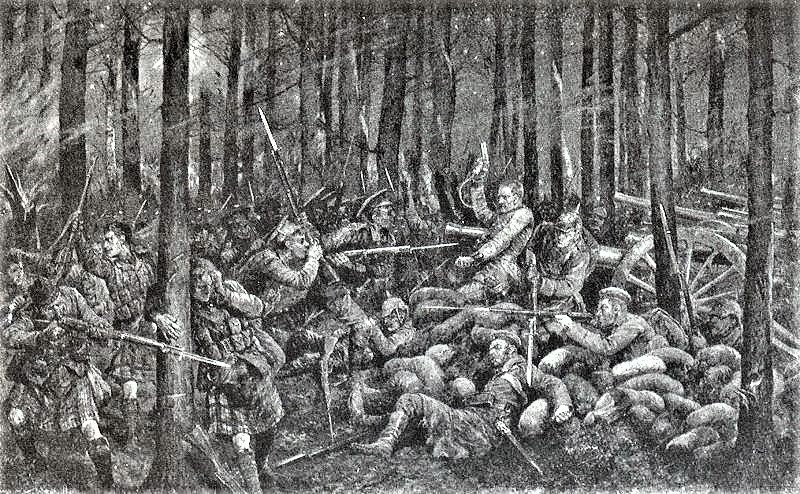Ypres Part One - Gravenstafel Ridge
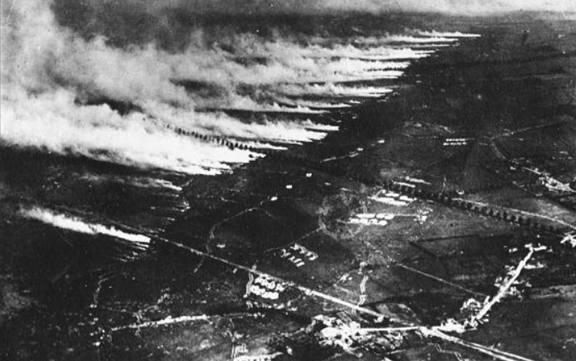
On April 22nd, 1915 at about 5:00 pm German soldiers released the valves on 5700 cylinders of chlorine gas along 6.5 km of the front near Gravenstafel, Belgium. The wind slowly blew the gas towards the Algerian and Morrocan troops of the French 45th and 87th Divisions. The gas had a distinctive odor, resembling pineapple and pepper. At first, the French officers assumed that this was a new form of smoke screening and they alerted the French soldiers to prepare for an attack.
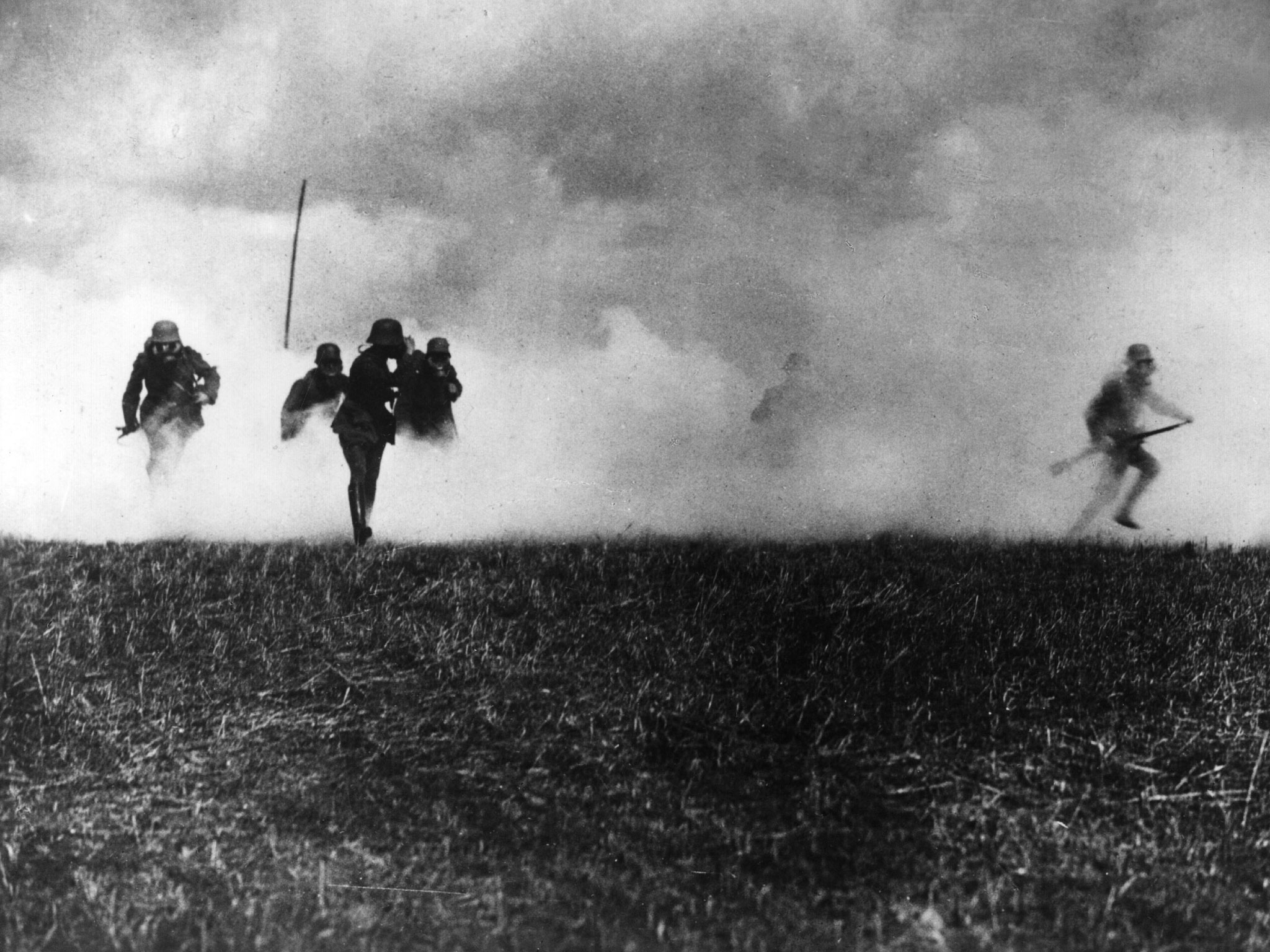
When the chlorine gas mixed with moisture from the soldiers' eyes, mouths and lungs it formed a powerful acid that destroyed whatever it contacted. Soldiers were blinded, their mouths burned and their lungs were destroyed. Within minutes the French soldiers began complaining of chest pains and a burning sensation in the throat. As their lungs burned out they asphyxiated, dying of suffocation. Within minutes 6000 were casualties and the rest retreated in panic, leaving a 6 km gap in the Allied lines.
Anthony R. Hossack of the Queen Victoria's Rifles described the chaos as the French soldiers retreated in panic: In the northerly breeze there came a pungent nauseating smell that tickled the throat and made our eyes smart. The horses and men were still pouring down the road. two or three men on a horse, I saw, while over the fields streamed mobs of infantry, the dusky warriors of French Africa; away went their rifles, equipment, even their tunics that they might run the faster. One man came stumbling through our lines. An officer of ours held him up with levelled revolver, "What's the matter, you bloody lot of cowards?" says he. The Zouave was frothing at the mouth, his eyes started from their sockets, and he fell writhing at the officer's feet.
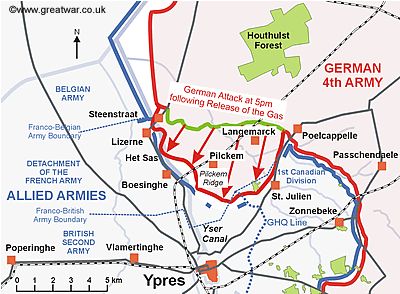
The Canadians were positioned on the right flank of the French soldiers. When the French line collapsed the Canadians had to turn left to face the attackers, to avoid being flanked. The 13th Canadian Battalion defended the flank of the break-in. A Canadian officer recognized the gas and ordered the soldiers to urinate into a cloth and hold it over their faces. He knew that uric acid would neutralize the gas. Fortunately for the Canadians, the Germans were slow to exploit the breakthrough and lacked the reserve forces to continue the attack.
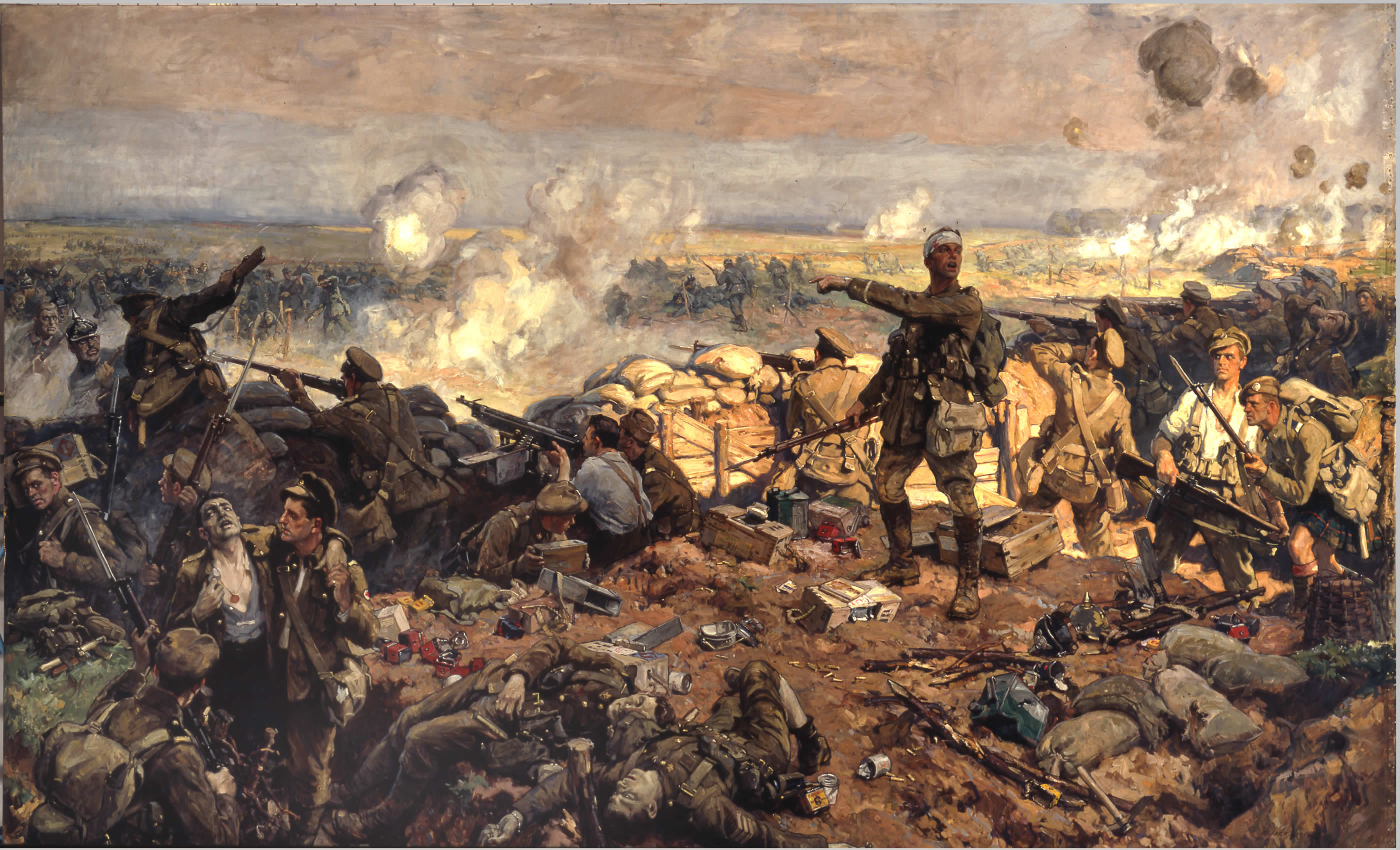
The Second Battle of Ypres by Richard Jacks
At 11 pm that night the Canadian 10th Battalion and 16th (Canadian Scottish) Battalion were ordered to counter-attack into an area known as "Kitcheners' Wood". Without proper reconnaissance or planning the 1600 men of the two battalions attacked in a series of waves. The battalions charged directly into the enemy's front, using pre-war open field attack tactics. Despite heavy fire from the German defenders, they pressed home their bayonet charge and cleared the woods of German attackers - at a cost of a 75-percent casualty rate.
